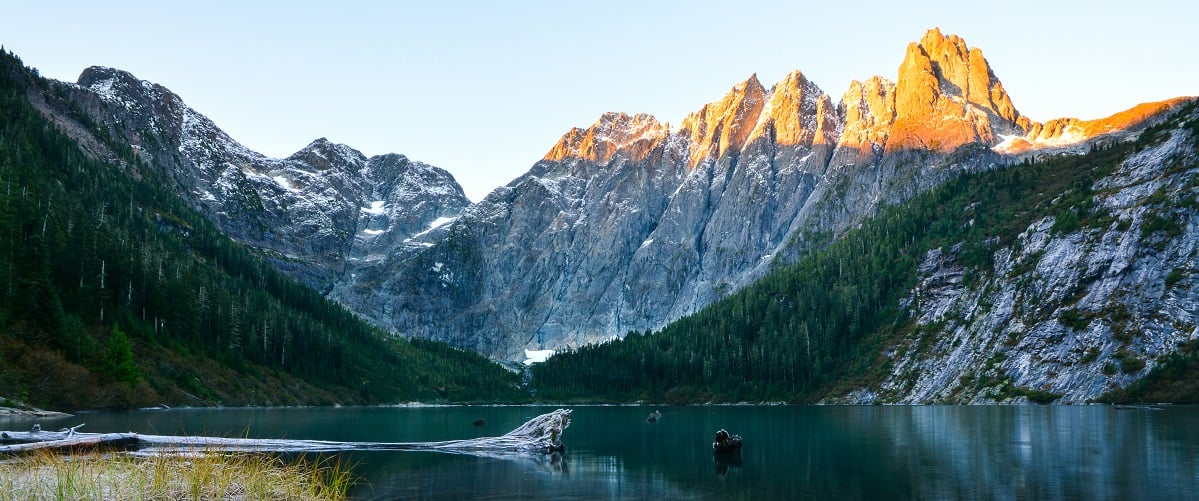Note: This story was originally published in October 2017.
Make the most of crisp fall weather or sunny spring days with these great places to go off-season camping in BC. From family-friendly parks to adventure huts for hikers, here are five camping spots that are open in the quieter shoulder seasons when rates are reduced and the scenery is just as beautiful.
Take the family “glamping” in one of the Fort Camping’s five tent cabins, or stay at one of the 156 campsites; each one has a fire pit to keep campers warm on cooler evenings. Close to Fort Langley’s boutiques, restaurants, and fort, the campground is also well situated for fishing on the Fraser River or sampling edibles on the Fraser Valley Circle Farm tour. Work it off with a stroll along one of the riverside walking trails, or try the more ambitious Fort to Fort trail to the site of the original Fort Langley.
Nearby, families that want to stay inside the historic Fort Langley National Historic Site can rent an oTENTik tent cabin between May and mid October.
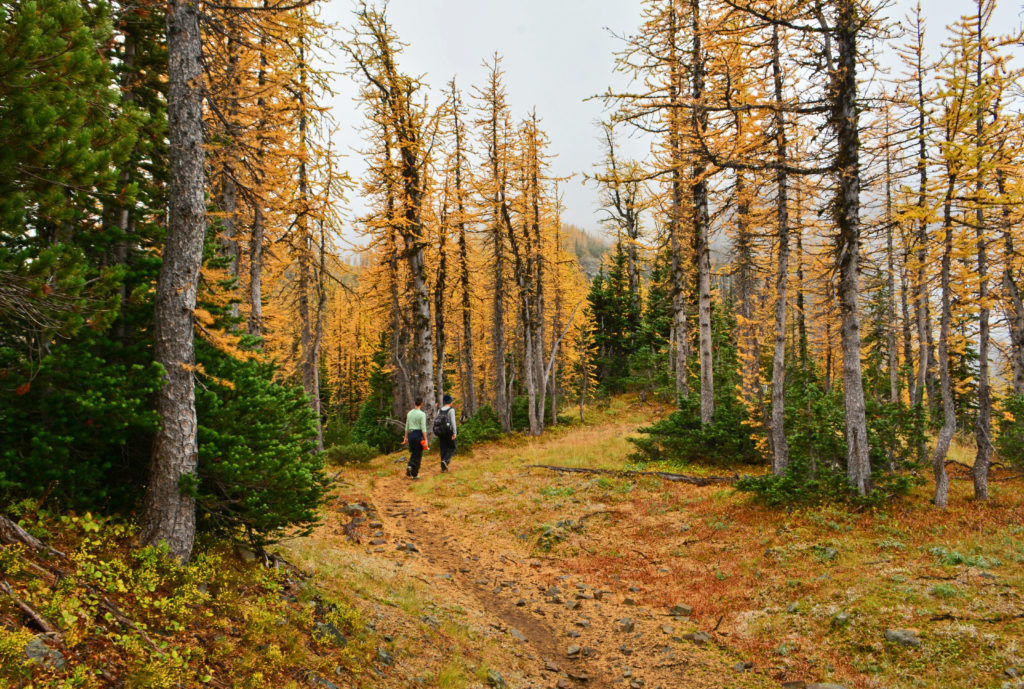
E.C. Manning Provincial Park is especially beautiful in the fall. Photo: Iain Robert Reid
Just off Highway 3, between Hope and Princeton, E.C. Manning Provincial Park has 10 wilderness camping areas and five family campsites situated close to Manning Park Resort in the Similkameen River basin. Mule Deer campground, located next to the Similkameen River, is usually the first campground to open in the spring. It offers tap water and flush toilets. Lightning Lake, the most popular campground, opens later in the spring due to snowfall.
People with self-contained units (no tents) can camp at Lightning Lake’s day-use area during the off-season. Off-season camping on a walk-in basis is available at Lone Duck 1. Winter camping is also available at the Cambie Creek group campsite from December 1 to March 31.
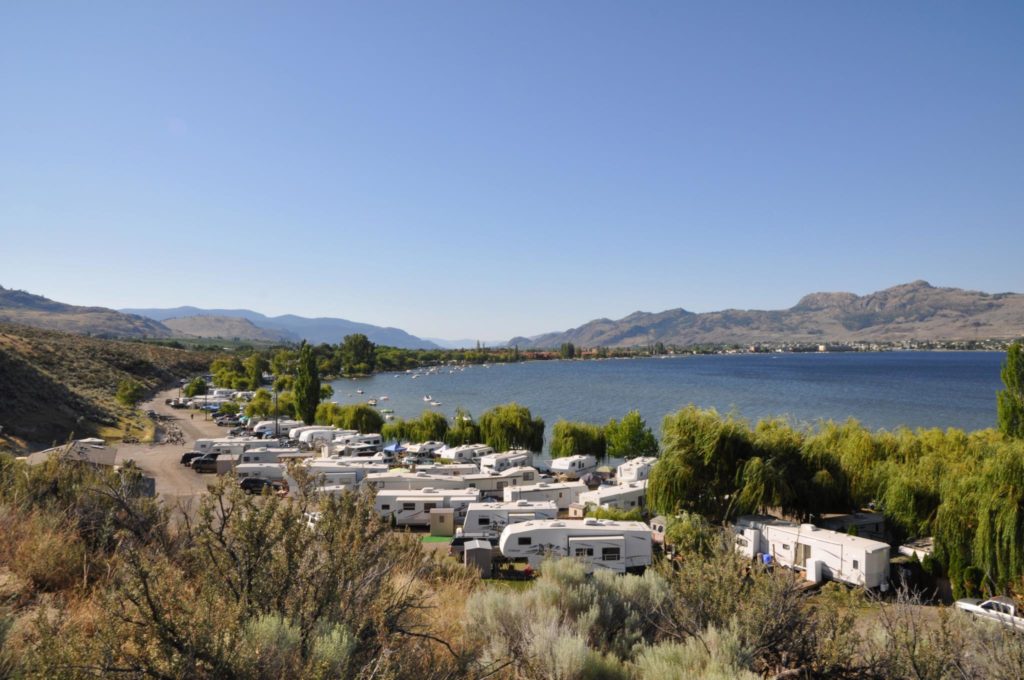
Nk’Mip RV Park and Campground is situated on the shores of Osoyoos Lake. Photo Nk’Mip RV Park and Campground
Situated on the shores of Canada’s warmest freshwater lake, Nk’Mip RV Park has been a year-round favourite since it opened in Osoyoos in 1970. Offering 350 sites, from tenting spots to full-service RV spaces, the campground is close to the town’s main street and is in the heart of Oliver Osoyoos Wine Country. The clubhouse’s indoor pool and hot tub is open between October and May, and Nk’Mip Resort’s spa, restaurant, winery, and desert cultural centre are all close to the campground for indoor activities.
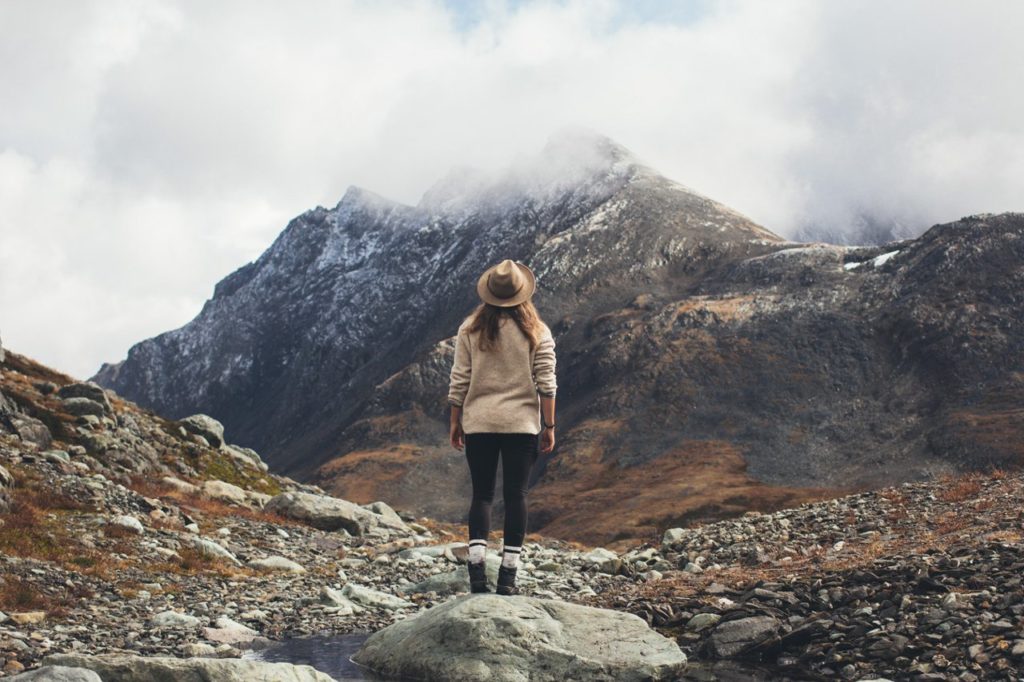
Taking in the view at Babine Mountains Provincial Park in Northern BC. Photo: @nathanlhuisman via Instagram
Northwest BC’s Babine Mountains Provincial Park is a wilderness wonderland of majestic peaks, sparkling glacier-fed lakes, and blooming sub-alpine meadows that are home to wildlife including mountain goats, moose, marmots, black bears, grizzlies, and wolverines. The park is popular with mountain bikers, horse riders, and hikers, and offers overnight lodging on a first-come, first-served basis at the Joe L’Orsa cabin in the Silver King Basin.
Named in memory of a local resident who spearheaded the effort to create a park in the Babine Mountains, the two-story timber frame cabin is accessed via the 13.5-km (8.4-mi) Silver King Trail, which rises through a forested valley onto sub-alpine meadows. The cabin sleeps 15 to 20 people on bunks in three bedrooms; it’s heated by a wood stove and has a pit toilet located outside. Note that visitors need to pack in and pack out everything they need, including food, pots and cooking utensils, sleeping bags, and water treatment tablets.
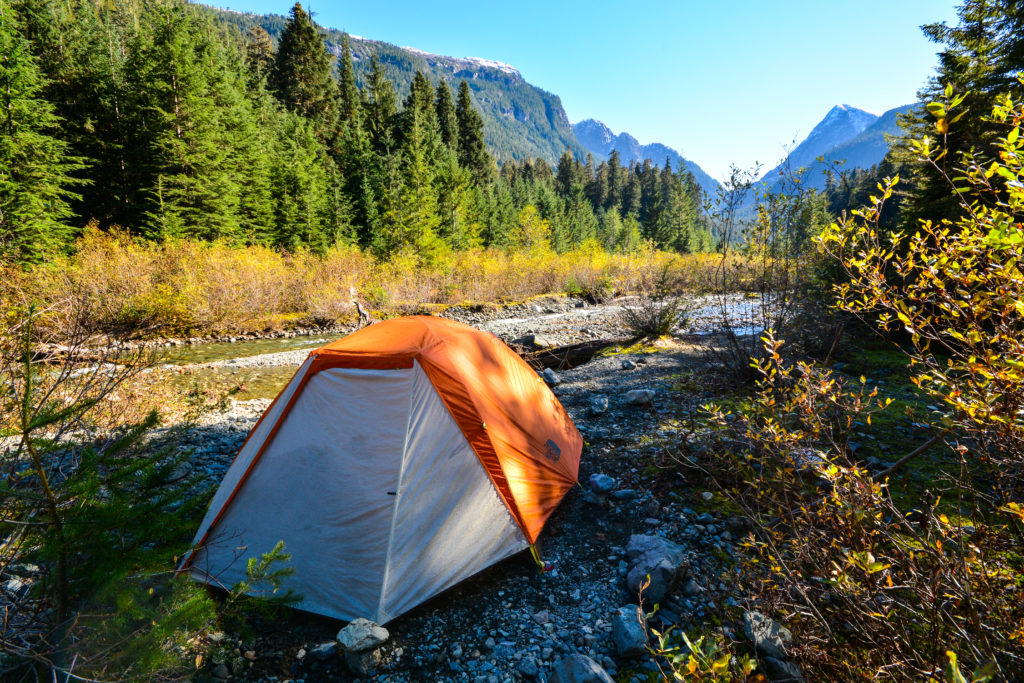
Camping in Strathcona Provincial Park. Photo Iain Robert Reid
Strathcona Provincial Park’s rugged forest, in the heart of Vancouver Island, is known for its hiking trails. These vary from short strolls, such as one that leads from the working Boliden-Westmin zinc, copper, gold, and silver mine to the scenic Upper and Lower Myra Falls, to longer trails that lead to backcountry access and elk-spotting in the lower Thelwood Valley.
Wilderness, backcountry, or walk-in camping is allowed around Arnica Lake on the Phillips Ridge Trail. It takes around eight hours to hike the 12 kilometres (7.5 miles) to the lake, and visitors must follow the pack-in and pack-out etiquette of Leave No Trace camping. The site has no facilities.
No matter what outdoor activity you are planning, be prepared. Follow the three Ts—trip planning, training, and taking the essentials. AdventureSmart and Leave No Trace are great resources to help you get informed before heading outdoors.
Opening image: Strathcona Provincial Park. Photo: Iain Robert Reid


